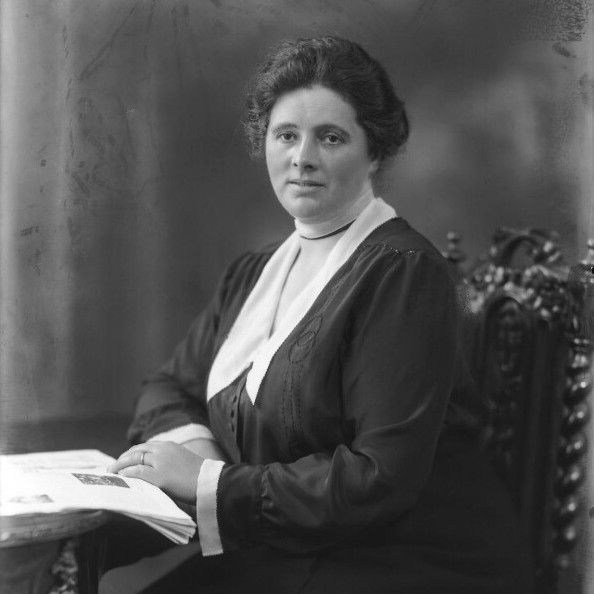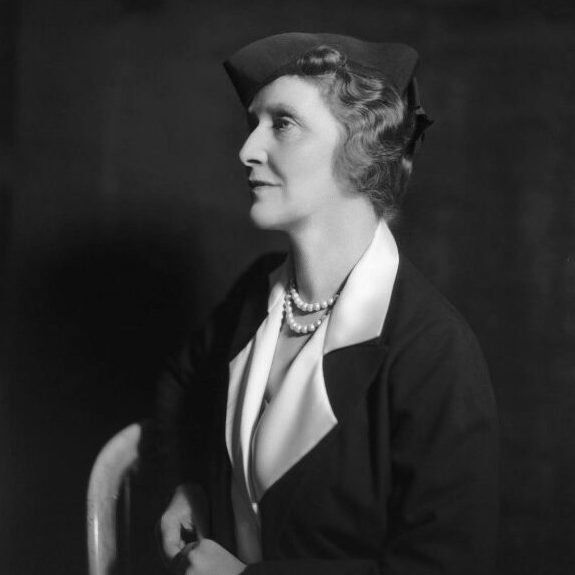Who were the first female Members of Parliament in Britain?
In my novel, Death at Crookham Hall, the fictional Mrs Sybil Siddons becomes the third woman to take a seat in the House of Commons when she wins a by-election in 1920.
But who was the first woman to be elected as an MP? Pub quizzers beware of this trick question. Many people think the answer to this is Lady Nancy Astor (1879 - 1964), pictured above.
However, the first woman elected to Parliament was Constance Markievicz, an Irish politician, revolutionary, nationalist, suffragist and socialist. In the 1918 General Election, she won 66% of the vote in the constituency of Dublin St Patrick's.
However, Constance was a member of Sinn Féin and, in accordance with their abstentionist policy, did not take her seat in the House of Commons. She was also in Holloway Prison at the time, jailed for her part in anti-conscription activities.
Lady Nancy Astor was the first woman to sit as an MP in the House of Commons as Constance Markiewicz never took her seat.
In 1919, American-born Lady Astor replaced her second husband, Waldorf Astor, as the Conservative MP for Plymouth Sutton. When Waldorf Astor inherited a peerage and became a member of the House of Lords, Lady Astor decided to contest the by-election for his vacant Parliamentary seat.
On 28 November 1919, Lady Astor won the by-election with more votes than the Labour and Liberal candidates combined. For nearly two years, she was the only woman in the House of Commons and, in her own words, tried “to speak for hundreds of women and children throughout the country who cannot speak for themselves.”
But she had to endure years of prejudice, constant jibes and was labelled ‘Lady Dis-Astor’ by her detractors.

Margaret Wintringham 1879 -1955
In 1921, Margaret Wintringham became the first British-born female MP, the second woman to take her seat in Parliament, and the third to be elected as an MP.
Her husband, Thomas Wintringham, was MP for Louth in Lincolnshire. When he died in 1921, Margaret was selected as the Liberal candidate to replace him. On 22 September 1921, she won the Louth by-election and became the first ever female Liberal MP.
Margaret Wintringham supported women’s suffrage and was a member of the National Union of Women's Suffrage Societies. Despite being on opposing sides, when she entered Parliament, she was welcomed by Lady Astor, who felt the cause of women in Parliament overrode party differences.
Like Lady Astor, Margaret campaigned for equal franchise (giving women the vote on the same terms as men). At that time, only women over the age of 30 who met property qualifications were allowed to vote. The Equal Franchise Act, though widely supported, was not passed until 1928. Margaret also campaigned for equal pay for women, state scholarships for girls as well as boys, and women-only railway carriages.
The backgrounds of these first two women to take their seats in the House of Commons could not have been more different. While Nancy Astor was aristocratic, sophisticated and sometimes volatile, Margaret Wintringham was the daughter of a head teacher and known as practical and sensible. This didn’t stop the two women from forming a lifelong friendship.
It’s interesting to note that when she became a politician, Lady Astor changed her style of dress. She tried to avoid comments on her clothing by adopting a ‘political uniform’ of dark jacket and skirt, white blouse and tricorn hat.
In Death at Crookham Hall, my fictional Liberal politician, Mrs Siddons, refuses to follow Lady Astor’s lead. Ignoring newspaper criticism, Mrs Siddons continues to indulge in her passion for silk dresses and expensive jewellery.
However, she does have to admit ruefully, “Most of my press coverage does tend to focus on what I look like rather than what I have to say.”

